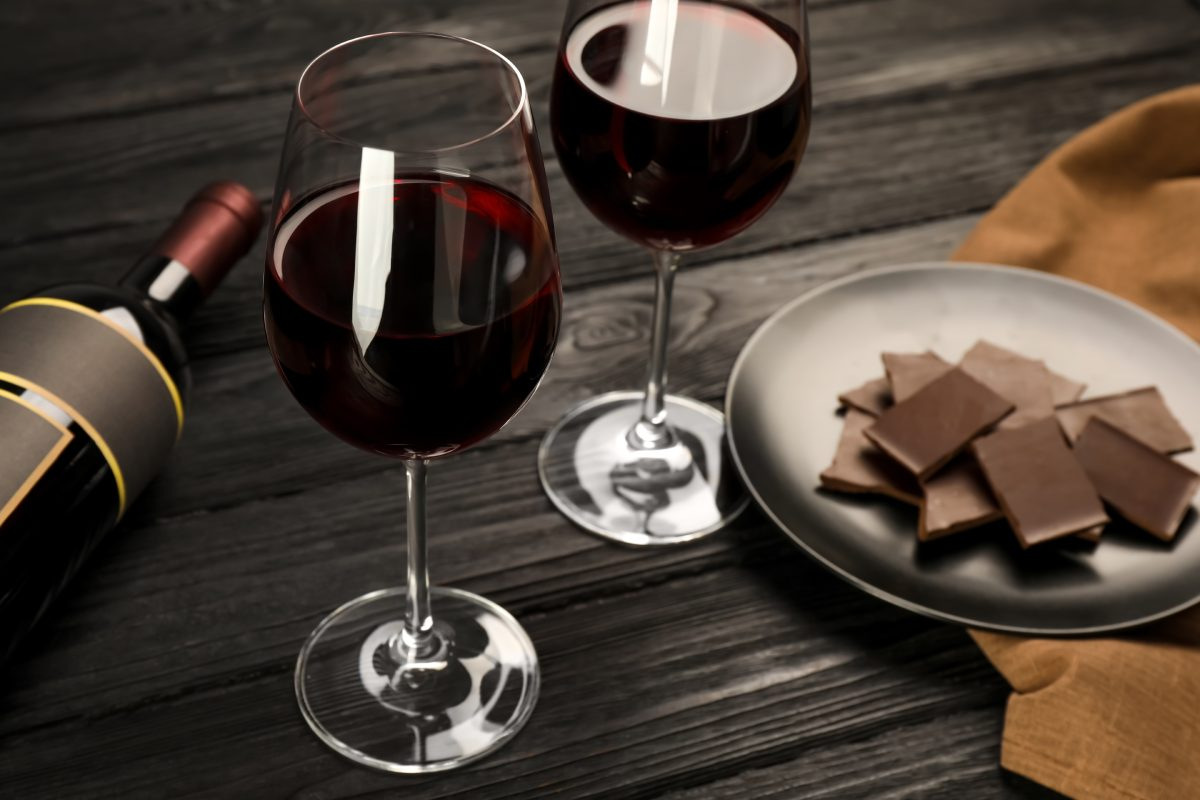Les desserts au chocolat, riches et intenses, méritent un accompagnement à la hauteur. Trouver le parfait accord vin et chocolat demande une attention particulière aux saveurs et à la structure des deux éléments.
Why pair wine and chocolate?

Pairing wine and chocolate may seem complex, but it enriches the taste experience by balancing their flavors.
1. Similarities
Chocolate and wine share complex aromas, such as red fruits, spices and woody notes.
2. Contrasts
A good dessert wine balances the sweetness and bitterness of chocolate. It amplifies the nuances of each bite.
Golden rules for a successful wine and chocolate pairing
To make a success of your dessert and wine pairings, follow these essential principles:
- Choose a wine as sweet as the dessert: A wine that's too dry may seem bitter in the face of a chocolate dessert. Opt for a sweet or mellow dessert wine.
- Match the wine to the type of chocolate: Each type of chocolate (dark, milk or white) requires a specific wine to bring out its flavours.
- Take secondary ingredients into account: Fruit, spices or nuts in the dessert also influence the choice of wine.
The best wines to accompany dark chocolate
Dark chocolate, with its pronounced bitterness and powerful aromas, is an ideal partner for rich, intense wines.
1. Full-bodied red wine
A Banyuls or Maury, with notes of ripe fruit and spices, goes perfectly with a dark chocolate fondant.
Classic pairings: chocolate fondant, black forest cake.
2. Porto Ruby
This mutated wine with its black cherry and plum flavors softens the bitterness of dark chocolate.
Classic pairings: chocolate truffles, dark chocolate mousse.
3. Natural sweet wines
A Rasteau or Muscat de Rivesaltes brings a balanced sweetness to the intensity of the dark chocolate.
Classic pairings: dark chocolate tart, classic brownie.
The best wines to accompany milk chocolate
Milk chocolate, which is softer and creamier, goes well with light, fruity wines.
1. Sweet wine
A Sauternes or Coteaux du Layon, with its notes of honey and apricot, sublimates milk chocolate.
Classic pairings: Milk-chocolate millefeuille, milk-chocolate éclairs.
2. Sparkling wine
A semi-dry Champagne adds a refreshing touch and a lightness that contrasts with the texture of the milk chocolate.
Classic pairings: Light milk chocolate mousse, chocolate ganache.
3. Light red wine
A Pinot Noir with red fruit aromas that delicately accompanies chocolate desserts without dominating.
Classic pairings: chocolate raspberry tart, milk chocolate coulant.
The best wines to accompany white chocolate
White chocolate, rich in cocoa butter and free of bitterness, goes well with fresh, fruity wines.
1. Sweet Muscat
A Muscat Beaumes-de-Venise, with notes of orange blossom and peach, is the perfect complement to white chocolate.
Classic pairings: White chocolate cheesecake, airy white chocolate mousse.
2. Sweet sparkling wine
A slightly sparkling, sweet Moscato d'Asti provides the ideal freshness to balance the fat of the white chocolate.
Classic pairings: White chocolate and exotic fruit millefeuille.
3. Sweet wine
A Tokaji, with its honey and citrus aromas, enhances the sweetness of the white chocolate.
Classic pairings: White chocolate and lemon tart, white chocolate ganache.
Wine and dessert pairings with complex desserts
Sophisticated desserts combining several types of chocolate or a variety of ingredients call for versatile wines.
1. Chocolate and red fruit
Pair a chocolate dessert with red fruit and a Crémant rosé or Cerdon du Bugey.
Examples: Chocolate-raspberry tart, chocolate-red fruit macaroon.
2. Chocolate and spices
For spicy chocolate desserts (cinnamon, chili), choose a spicy red wine like a Grenache.
Examples: Spicy chocolate mousse, cinnamon brownies.
3. Chocolate and caramel
A sweet wine like a Monbazillac balances the richness of a dessert combining chocolate and caramel.
Examples: Chocolate fondant with salted butter caramel.
Mistakes to avoid when pairing wine and chocolate
- Forget the balance of flavors: A wine that is too dry can reinforce the bitterness of chocolate. Choose sweet or semi-dry wines.
- Underestimating the intensity of the dessert: Intense chocolate desserts require equally robust wines if they are not to be overshadowed.
- Neglecting the details of dessert: Consider secondary aromas to choose the most harmonious wine.
Conclusion
Well-chosen dessert wines transform your chocolate creations into unforgettable taste experiences. By following these tips and exploring different dessert wine pairings, you'll find combinations that sublimate every moment.
If you enjoyed this article, you may also be interested in "How to combine wine and cheese for an optimal taste experience"!





